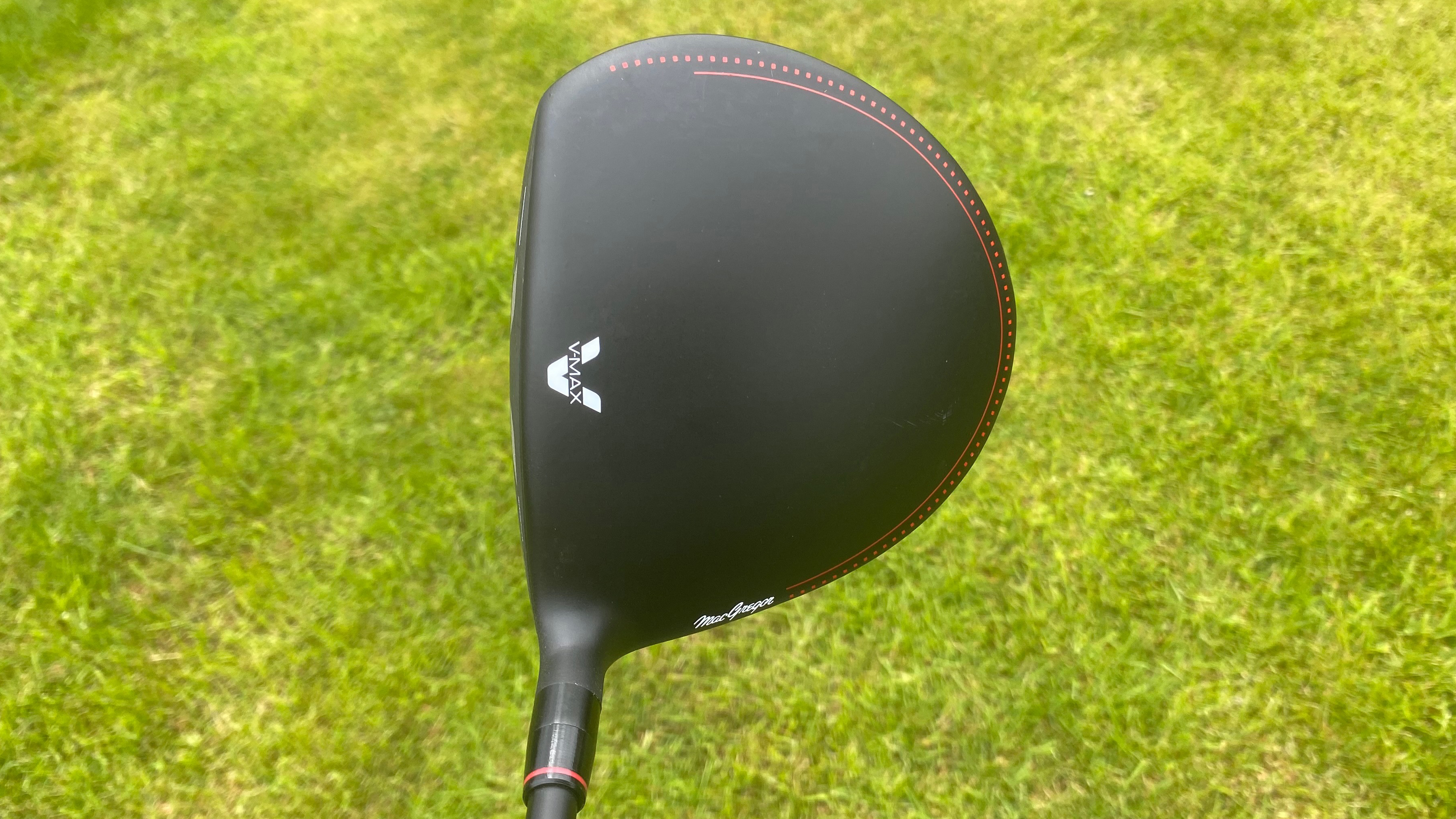MacGregor V-Max Driver Review
We take a look at the MacGregor V-Max driver to see what it has to offer…

At very much an entry-level price point, the MacGregor V-Max driver delivers an awful lot of performance. The aesthetic won’t be to everyones taste, but in terms of value for money, this is a tough driver to beat.
-
+
Good levels of ball speed
-
+
Very easy to launch
-
+
Reasonably forgiving
-
-
The fussy aesthetic and color scheme will turn a few off
Why you can trust Golf Monthly

Founded in 1897, MacGregor has been making clubs for well over a century and has numerous major championships to its name. In more recent years, MacGregor has become synonymous with affordable clubs aimed at the more price-conscious player, such as the new V-Max series. I was sent the new V-Max driver and took it out to see how it compares to some of the best drivers of 2024.
Tech-wise, MacGregor is offering a 460cc head in either 10.5 or 12 degrees of loft, with a high MOI design and a large sweet spot. It features an ultra-slim face to help with ball speed and its lightweight, regular flex, graphite shaft is designed to help maximize club head speed.

From a looks point of view, the head will divide opinion. The matt black and bold red color scheme is certainly eye-catching, and I personally didn’t mind it, however, I do feel there is far too much going on with the visual of this driver. Around the perimeter of the crown, there is a bold red accent, which if it was singular could be understandable, however, MacGregor has decided to opt for both a solid red line and red dots which is just too busy for me. The are V’s all over this club too, I counted four in total. One on the face, one on the crown, another on the sole, and a final one on the shaft. MacGregor has just tipped into overkill territory with the branding, even to the point where the shaft is installed with all the graphics on the top side rather than neatly tucked underneath.

The head shape overall is pretty good, although the top edge is alarmingly straight, whereas more premium drivers will see a gentler curve and taper to the top line. Even on the 10.5-degree version I was sent, there is plenty of visible loft to inspire confidence, and that 460cc head looks fairly inviting behind the ball. It sits very squarely which is important, particularly for beginners who can struggle to line up effectively.

Performance-wise, I think the V-Max does exactly what it sets out to do. Strikes across the face are not punished too harshly and it is very easy to get this driver airborne. It is difficult to assess ball speeds particularly accurately as I had to slow my swing down significantly to make this driver effective (for context I am a PGA Professional), but it did feel as if it was zipping off the face with significant velocity. I didn’t detect a particular ball flight bias one way or the other but I was impressed with the relatively tight dispersion patterns I saw. Even the poorest of my connections didn’t seem to veer too far from my intended target which was a testament to the high levels of playability on offer and a very important feature of the best drivers for high handicappers.

The sound was far from subtle but wasn’t too offensive either. Fairly loud and high-pitched but still at an acceptable decibel level, and the feel was pretty palatable too.
On the downside, the V-Max driver is a little limited in terms of options. It is only available in right hand, and while there are two loft options, there is only one shaft. That said, players shopping in this area are probably not at the stage where an abundance of options is necessary, so this likely isn’t a huge problem.
Subscribe to the Golf Monthly newsletter to stay up to date with all the latest tour news, equipment news, reviews, head-to-heads and buyer’s guides from our team of experienced experts.
For £129.99 this driver does an exceptionally good job and importantly, it feels well made enough to last for a good length of time and withstand quickening swing speeds of improving golfers. Easy to launch, very forgiving, and durable. For the price, I would say it is a job well done.

Joe has worked in the golf industry for nearly 20 years in a variety of roles. After a successful amateur career being involved in England squads at every age group, Joe completed his PGA degree qualification in 2014 as one of the top ten graduates in his training year and subsequently went on to become Head PGA Professional at Ryder Cup venue The Celtic Manor Resort. Equipment has always been a huge passion of Joe’s, and during his time at Celtic Manor, he headed up the National Fitting Centres for both Titleist and Taylormade. He’s excited to bring his knowledge of hardware to Golf Monthly in the form of equipment reviews and buying advice.
Joe lives in North Devon and still plays sporadically on the PGA West region circuit. His best round in recent years came earlier in 2023 where he managed a 9 under par 63 at Trevose GC in a Devon & Cornwall PGA Tournament.
Joe's current What's In The Bag?
Driver: Switch between TaylorMade Qi35 and Callaway Elyte TD - both with Fujikura Ventus Black 6-X
Fairway wood 1: TaylorMade BRNR Copper Mini Driver - Fujikura Ventus Black 7-X
Fairway wood 2: Callaway Apex UW 17˚- Fujikura Ventus Black 9-X
Irons: TaylorMade P7CB 3-PW with Dynamic Gold Tour Issue X100 shafts
Wedges: Callaway Opus 50, 54, and 60 degrees - Project X LS 6.0 shafts
Putter: LAB Golf Oz.1 (zero shaft lean)
Ball: TaylorMade 2024 TP5x
Grips: Golf Pride Tour Velvet 60R
Bag: Vessel Player IV Pro DXR Stand